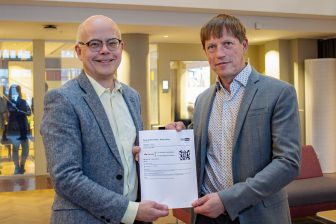
Smart data from Big Data in the rail arena
Quality over quantity. That’s the principle which Matthias Landgraf believes underpins the value of ‘Big Data’ in the rail sector, and one which he will be sharing with rail professionals from across the world at the forthcoming RailTech Europe 2017. [/text]
A scientific senior scientist at the esteemed TU Graz’s Institute of Railway Engineering and Transport Economy, Matthias is one of Europe’s foremost experts on the use of Big Data in railways. And it is his assertion that extracting Big Data – in whatever form that might take, be it trackside, on-board or other infrastructure – does not go far enough. To make best use of the information available and influence long-term planning, identifying ‘smart data’ is the key to ensuring safety and optimising life-cycle costs.
Priority
“It is about ascertaining which elements are the most critical, and which require the most priority,” says Matthias, who will be presenting Smart Data in Asset Management for Railway Track on Day two of RailTech Europe 2017, which takes place at the Jaarbeurs Utrecht on March 28, 29 and 30.
“This is, in fact, a two-step approach,” he adds. “First you have to ascertain the most critical elements and assets, and secondly you have to fully explore which data and further one which type of data analyses enables the evaluation of the asset’s condition.
“The most important elements are the ones influencing safety and life-cycle costs. The former increases the risk of accidents and decreases the availability when in inadequate condition. The latter are elements with high maintenance demands and/or defining the assets’ service life.”
Smart data
In 2006 TU Graz established a data ‘warehouse’ containing track information covering some 4,000 kilometres of Austria’s rail network. Comprising one billion data records, the challenge is to find a way of extracting this Big Data into a smart data application for railway track asset management – an enormous undertaking by anyone’s standards.
“The data warehouse evolved since 2006 in close cooperation with Austrian Federal Railways (ÖBB),” says Matthias. “Over the years the warehouse was supplemented steadily with data from ÖBB as well as calculated innovative parameters established at Graz University of Technology.”
Two-sided approach
He strongly advocates a two-sided approach to the practice of net-wide asset management using Big Data analyses.
“This combines strategic top-down and bottom-up approaches,” he says. “Within the top-down approach for asset data, we conduct online strategic analyses which are based mainly on economic considerations. The bottom-up approach is based, as far as possible, on automized technical condition evaluation of every specific cross section of track measurement data. So, as one example the ideal point of time for renewal of track infrastructure can be distinguished by combining the technical condition with economic calculations.”
He also acknowledges that, inevitably, there will always be certain barriers – people being people – to achieving the project’s aims.
New approaches
“Of course, there is always the issue of acceptance of new approaches,” he says. “In Europe I believe that many track engineers getting more and more used to trusting in measurement data and its possibilities. The most important thing is to include everyone within the process and try to keep solutions as simple as possible. My advice is this: Keep the analysis and calculations in the background and provide simple and understandable figures on the operators’ interface.”
Given the immense technical challenges faced, there is also the need to remember that technology is not infallible, and that a ‘common sense’ attitude must always be part of the equation.
“We already have enough data to play around with in railways,” says Matthias. “Connecting the dots and drawing useful conclusions is what leads to an increase of quality and efficiency. This requires functional knowledge – both IT and expert knowledge in railways.”
Key message
And if there was one key message for delegates to take away from his presentation next month?
“The amount of data is neither the problem nor the big deal. A proper Railway Asset Management requires functional knowledge – both IT and Railway skills – in order to get smart data out of big data.”
For more information about RailTech Europe 2017 visit the website.




